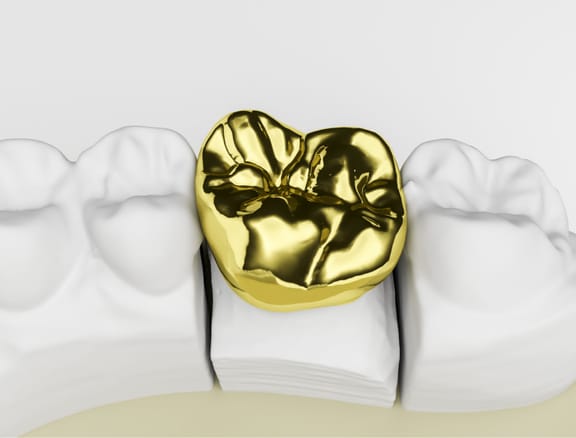Restorative Crowns
Crowns are an ideal way to restore a broken tooth to its normal shape, size and function.Placing a Porcelain Crown In 1 Visit
Because our office can provide a dental crown in a single dental appointment, we do things a little different than other dental offices. We can skip the temporary molds and the time it takes to have a dental lab fabricate your final crown.
1. We start the crown procedure by reducing the overall size of the tooth that's in need of a dental crown. Shaving off existing tooth structure allows for the new crown to fit properly and it also creates a foundation for the new crown to be bonded to.
2. Next, using our state-of-the-art CEramic REConstruction (CEREC) system, we will digitally scan the section of your mouth that has been prepared for the crown. This is done by using a special wand that can be easily positioned in your mouth to ensure an extremely accurate digital representation of the restoration area.
3. We will now be able to see a high-resolution 3D representation of the area and start to design a new crown that will fit perfectly over the prepared tooth. Our patients often love getting to see us create a new tooth for them in real time, right there on the screen.
4. Once the digital representation of the new crown has been created on the computer, we will send it off to our in-house milling machine. We place a block of porcelain that has been color-matched to the shade of your existing tooth into the milling machine and run the program. This amazing machine robotically fabricates a perfect crown restoration that is ready to be placed over the prepared tooth at this time. This crown is the final crown and NOT a temporary crown which means you have just received a new dental crown in a single dental appointment.
Full Porcelain Crowns
These are very aesthetic, bonded crowns. They are mostly used for front teeth because they are the most natural looking type of crown and are often used in "cosmetic" dentistry.
There are many types, but they all have a common feature - no metal. They can occasionally break, but dental technology has advanced far enough to make them quite strong.
Types of Crowns
With today's advances in dentistry, there are several options when choosing a type of crown:
- Porcelain outer surface with a metal base crown
- Pure porcelain or composite crown
- All metal crown, which is usually gold
They all differ in durability, strength, appearance and cost.
Gold Crown
The 'gold' standard. Dental gold is about 60% gold alloy which is meant to match the hardness of the enamel of opposing teeth so both wear about evenly, an important trait. Gold does not tarnish or corrode and has some bacterial-inhibiting quality. Gold crowns are strong and will not break. However, gold crowns obviously are not considered aesthetic; they are gold colored. Usually, gold crowns are used for lower back molars because they aren't as noticeable.
